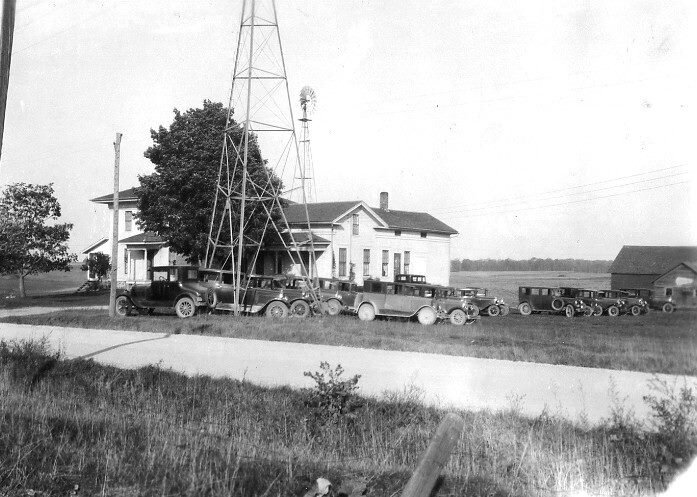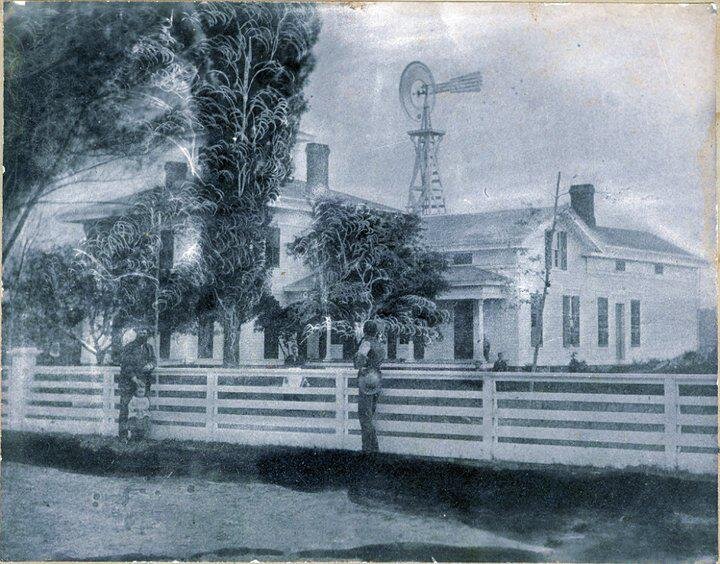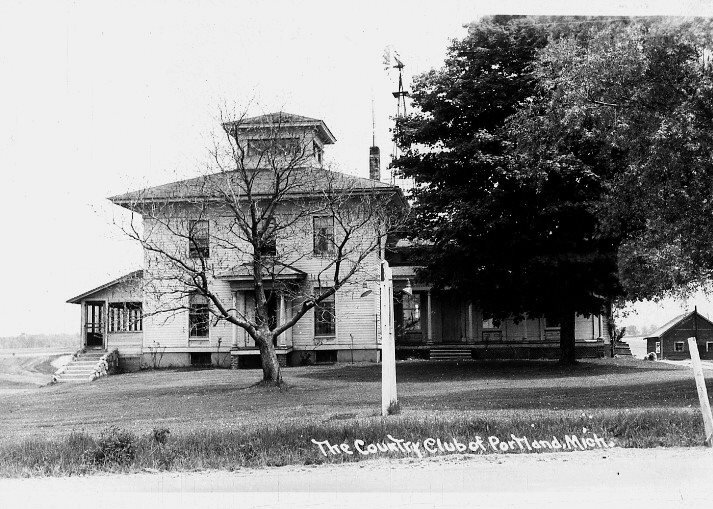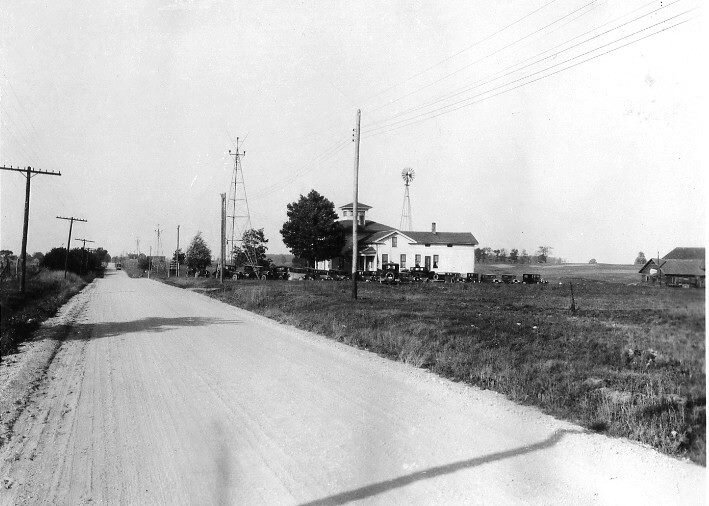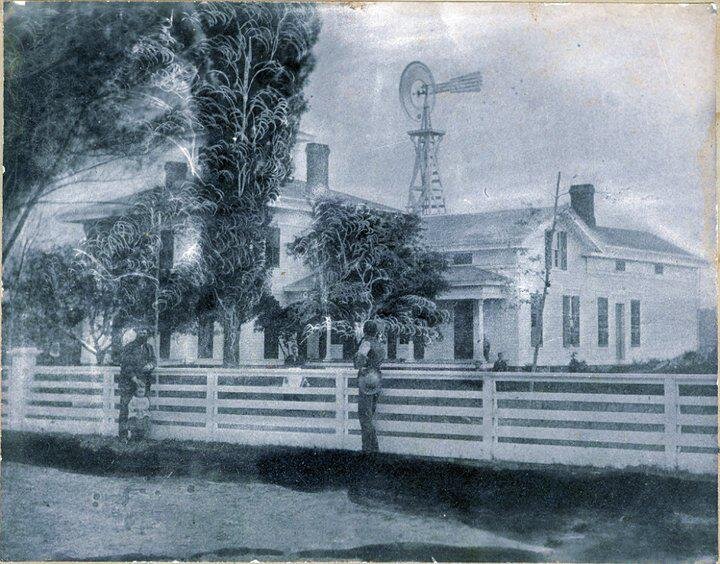Portland Country Club History
It all started when…
Originally written by: Charles T. Lockwood
Up to about 1924, I had never played a game of golf. I was the postmaster in Portland at that time and my wife, Mary Smith Lockwood, and I frequently spent a weekend at Crystal Lake with a friend of ours, Howard Benson, and his wife. They were both golfers and they convinced us to try the game out on a little course near the lake. As a result, we caught the golf bug, bought some golf clubs, and played whenever we had a chance.
One Sunday evening as we were returning from Crystal Lake, we passed a farm just a few miles north of Portland. As we passed this farm Benson said, "That would make a swell golf course. It has nice rolling fields and a big house that could be turned into a clubhouse". Thus the idea was born.
The farm was owned by Mary's cousin, Raymond Smith. I wrote to Raymond asking if he would consider selling the farm–his answer was yes.
About the same time, some men in Portland had started a golf course on the John Toan place along Maynard Road. It was pasture land that was very hilly but by making a few rough fairways and temporary greens they were able to play some golf. I talked with Dr. Toan about his intentions to complete the course. I told him we were thinking about starting a course of our own on the Smith Farm. He said that would be fine and he would be glad to join a club if one was started.
Benson and I talked with some businessmen in Portland and thought we would try to interest people in the surrounding towns of Lyons, Muir, Pewamo, Fowler, Sunfield, Westphalia, and Grand Ledge. We quickly came to the conclusion that there was sufficient interest, so we formed the partnership of Lockwood and Benson. We started the proceedings to buy the Smith Farm and began the undertakings to get the Portland Country Club underway.
Benson was to sell memberships and I was to get the course in shape for play. Lyle Barnard, who worked for Mary's father, had some previous experience on a golf course and agreed to help. A man from Lansing laid out a course, but it did not suit us, so we made some changes in the plans. We began construction in the spring of 1926. The first task was to plow the land that was to be the future golf course. Next, we constructed the greens and leveled the fairways. Some schoolboys were hired, plus we received volunteer help from many interested people in the area. Together we raked the entire course with garden rakes in order to remove all the stones that might ruin the mower. We bought German Bent seed for the greens and June grass seed for the fairways. In August of 1926, I sowed the seed on both the greens and the fairways. Fortunately, it was a good season for grass, and before winter set in the course looked like a big beautiful lawn.
In the meantime, Benson had been busy getting members. He did an excellent job because by winter he had between 75 and 100 people signed up. They paid a membership fee of $50. Which not only gave us enough money for the down payment on the farm, but it covered the cost of construction. All during the winter of 1926-27, we recruited more interested people so that by spring of 1927 we recruited more interested people so that by the spring of 1927 we had over 100 members signed up.
The house, which was to be converted into the clubhouse, had no modern conveniences. It was necessary to construct a septic tank and install some kind of water system. This was accomplished by placing a large wooden tank in the second story over the kitchen. The windmill on the back porch was then used as a means of pumping water up to the tank. After all, this was completed, a toilet near the future pro shop and a bathroom off the kitchen was added to the interior of the house.
Our next problem was the lack of electricity. We attempted to get the Consumer Power Company to run an electrical line from the dam at Electric Park to the country club. The drawback here was that they wanted at least five subscribers and each was to pay $180. We talked with Frank Jenkins, who was then the Portland Village Manager. We discussed the idea of running the electrical line from Portland to the clubhouse. Soon Frank and I came to an agreement where four farmers and the country club subscribed to the electric current. We bought the necessary poles and wire and the electric crew from Portland installed the line. A man named Bristy Smith, with some outside help wired the clubhouse. This turned out to be a difficult job because the 4 x 4 studdings in the house were made of solid oak. Thus, with a lot of work that involved more money than we had, we were ready to open the golf course for play.
The grand opening took place on July 1, 1927. Despite the fact that 50 percent of the members had never played golf, they were all very anxious to get started. Although the new course was not entirely ready, we started playing there anyway. Golf then became so popular that on special days and weekends we had to have a starter and a ranger on the cause. This was necessary for two reasons. One was to help those who had never played before, and the other was to hurry people along to keep the game moving.
At the opening, and for several years after, we served country-style chicken dinners for $1. About this time (late 1927) Mary's father had a chance to sell his farm for what was then a big price. Mary's sister, Ruth, and her husband, Frank McGowan were on the road in vaudeville. They told us they were interested in the golf course, so Mary's father said that he would sell the farm and buy out Benson. The club would then be owned by Lockwood and McGowan. This was done by paying Benson $500. For his interest and we would assume all debt. The debts at this time were plenty, but with help from Mary's folks, we paid for the land and were able to begin.
Since the McGowan's were still in vaudeville and could not help at the club, they agreed to pay Lyle Barnard $50. a month, which were the wages he asked for to help with the course. There were times though that we could not raise the $50. This did not seem to bother Lyle much because as he lived with us, he became one of the family and showed as much interest in the course’s operation as if he owned it. Actually, Lyle practically managed the course for the next 20 years.
The years 1927 through part of 1930 were very good. At that time the yearly membership remained $50. for a single and $75. for a family (which included school-age children). The big depression hit about this time and people stopped playing golf. The vaudeville theatres closed and the McGowans came home and helped. In the spring of 1929, Mary's mother and father both died, and in 1930 Frank McGowan Junior was born. In March of the same year, I took over the operation of the gas station next to the Divine Hotel. Many golf courses in Michigan closed at this time and were barely making enough to live on by operating the gas station and with Frank McGowan working during the winter; we were able to keep the course open and operating.
In order to increase our revenue, we got the idea of converting the big barn into a dance hall. We put in a nice maple floor and started holding dances for the public. This was a great way of getting the people to come out to the club and earn a little extra money, so these dances served a good purpose.
